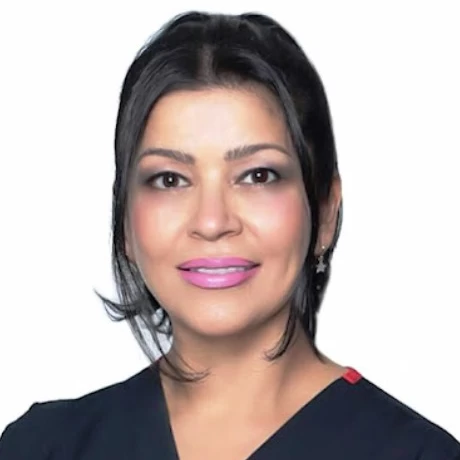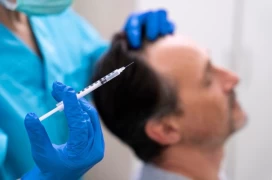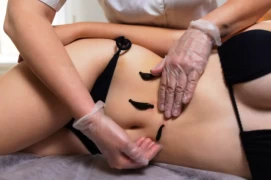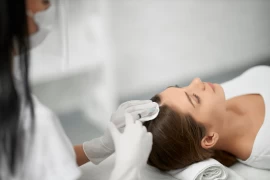
Hair Mesotherapy in Clinical Practice: A Frequently Utilized Method in Traditional and Complementary Medicine (GETAT) Centers
- Hair Mesotherapy in Clinical Practice: A Frequently Utilized Method in Traditional and Complementary Medicine (GETAT) Centers
- Purpose and Application Principles of Hair Mesotherapy
- How Is Hair Mesotherapy Applied?
- Benefits of Hair Mesotherapy
- Areas of Use for Hair Mesotherapy
- Side Effects and Risks of Hair Mesotherapy
- Post-Treatment Care for Hair Mesotherapy
- Conclusion
Hair mesotherapy is one of the frequently used treatment methods in Traditional and Complementary Medicine (GETAT) units and centers. This method is particularly applied to prevent hair loss, strengthen weak hair strands, and revitalize hair follicles. Due to the visible results it can achieve in patients, it has become a recommended treatment option. Here, I will provide detailed information about how hair mesotherapy works, who it is suitable for, and what realistic outcomes can be expected from this treatment.
Purpose and Application Principles of Hair Mesotherapy
Hair loss is a common problem experienced by both men and women. There are different types of hair loss, such as androgenetic alopecia (male pattern baldness), telogen effluvium (temporary hair loss), and alopecia areata (patchy hair loss). These types of hair loss can occur due to various reasons, including genetic factors, stress, hormonal imbalances, nutritional deficiencies, and environmental factors. While conventional medicine addresses these issues with various medications, hair mesotherapy offers a more individualized and scientifically based approach.
Hair mesotherapy involves injecting a combination of vitamins, minerals, amino acids, enzymes, and growth factors into the middle layer (mesoderm) of the scalp. This direct nourishment of the hair follicles helps slow down hair loss and strengthens the roots. The ingredients used in mesotherapy can be specially formulated according to the patient's type of hair loss, overall health, and specific needs.
How Is Hair Mesotherapy Applied?
During the treatment, microinjections are made into the scalp using fine needles. These injections target the mesoderm layer where the hair follicles are located, providing revitalizing nutrients to the roots. The mixture used in the treatment typically includes biotin, zinc, copper, amino acids, vitamins (especially B-complex vitamins), and certain growth factors. Sessions are usually scheduled weekly or biweekly, and the duration of the treatment depends on the severity of the patient’s hair loss.
Some patients may feel concerned about the fact that hair mesotherapy involves needles. However, since these microinjections are done with very fine needles, they generally cause mild discomfort rather than significant pain. Furthermore, patients can return to their daily activities immediately after the sessions, as the treatment requires minimal recovery time.
Benefits of Hair Mesotherapy
- Slows Down and Stops Hair Loss: Hair mesotherapy not only slows down the hair loss process but also helps restore natural hair growth levels by nourishing the roots. It stimulates the hair follicles and encourages new hair growth.
- Strengthens Hair and Improves Hair Quality: The vitamins, amino acids, and minerals used in the treatment help strengthen hair and improve its quality. Patients with weak, thin hair may notice stronger and healthier hair strands after mesotherapy.
- Compatible with Hair and Scalp’s Natural Properties: The substances used in hair mesotherapy consist of vitamins and minerals that are already naturally required by the body. As a result, mesotherapy is a reliable treatment method with little to no systemic side effects.
- Targeted Treatment via Local Application: Mesotherapy delivers the active ingredients directly to the hair follicles. While vitamins or minerals taken orally are distributed throughout the body, mesotherapy provides localized effects by applying the substances directly to the target area.
- Increases Blood Circulation: Microinjections improve blood circulation in the scalp, which in turn enhances oxygen and nutrient supply to the hair follicles. Increased blood flow helps strengthen hair follicles and supports new hair growth.

Areas of Use for Hair Mesotherapy
Hair mesotherapy is an effective treatment method for various types of hair loss. Its most common areas of use include:
- Androgenetic Alopecia: Also known as male pattern baldness, androgenetic alopecia can be treated with hair mesotherapy. The treatment helps slow down hair loss and strengthen hair follicles.
- Telogen Effluvium: In cases of temporary hair loss caused by stress, hormonal changes, or illness, mesotherapy helps hair recover more quickly and shortens the shedding period.
- Alopecia Areata: In this condition, which is believed to involve the immune system attacking hair follicles, mesotherapy can stimulate hair regrowth by nourishing the follicles and using mixtures containing immune-modulating substances.
- Weak and Thin Hair: Mesotherapy is not only used to treat hair loss but also to strengthen weak and thin hair, giving it a fuller and healthier appearance.
Side Effects and Risks of Hair Mesotherapy
Hair mesotherapy is generally a safe treatment method. However, as with any treatment, there can be some side effects. After treatment, slight redness, swelling, or tenderness may occur in the treated area. These side effects usually resolve on their own within a short period. More serious side effects are rare and typically result from allergic reactions. Therefore, it is essential to ensure that the mesotherapy is performed in sterile conditions and by licensed medical professionals authorized by the Ministry of Health.
Post-Treatment Care for Hair Mesotherapy
After the treatment, it is important to avoid getting the scalp wet for at least one day and to protect the scalp from direct sunlight. Additionally, since it takes time for the hair follicles to strengthen after mesotherapy, patients are advised to be patient and continue with regular treatments. Visible results usually appear after 2-3 sessions.
Conclusion
Hair mesotherapy is a scientifically supported solution for hair loss and weak hair strands in the field of Traditional and Complementary Medicine. The creation of personalized treatment protocols for each patient plays a significant role in the success of this method. Hair mesotherapy, with its biologically compatible ingredients and direct-target approach, holds a key place in the treatment of hair loss.
When applied regularly, hair mesotherapy can yield positive outcomes such as the regrowth of hair, strengthening of hair follicles, and halting hair loss.
Based on these features, hair mesotherapy can be positioned as a primary treatment option among hair support therapies.

Dr. Hülya Ettekin
Traditional and Complementary Medicine Physician





